Keswick-Threlkeld railway
Keswick-Threlkeld railway
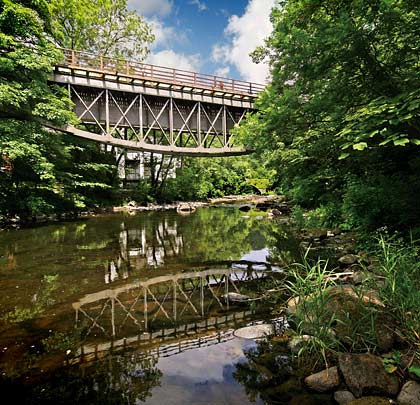
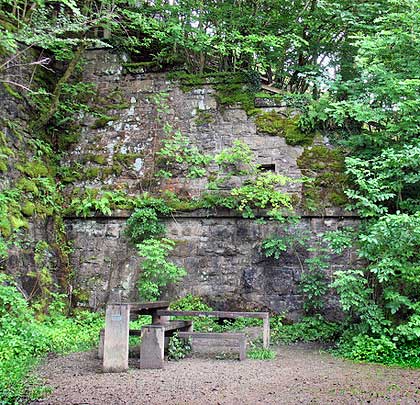
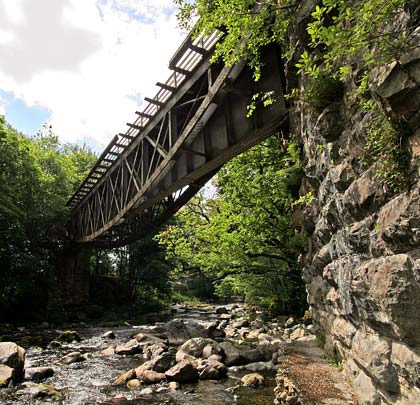
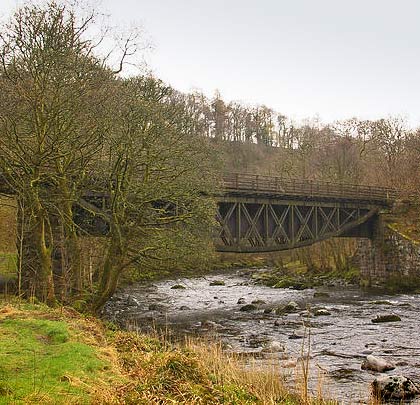
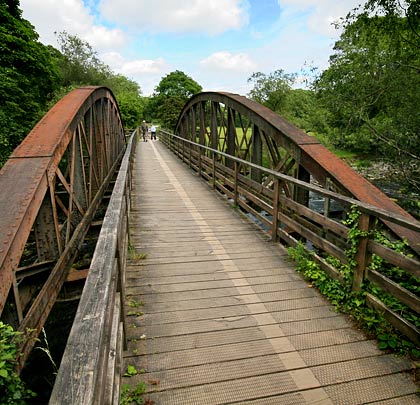
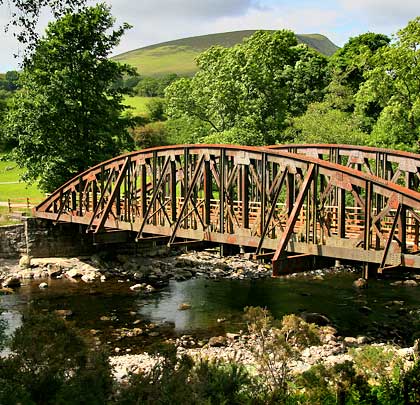
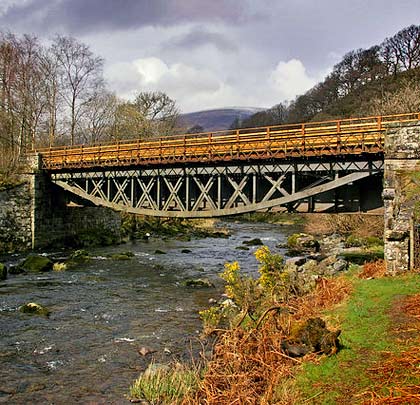
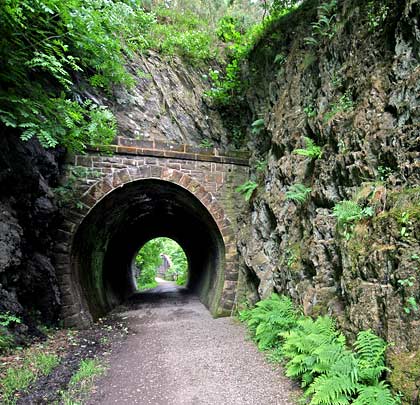
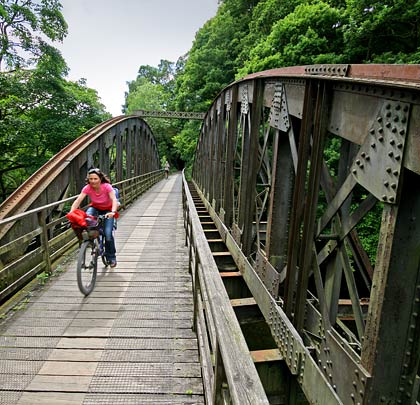
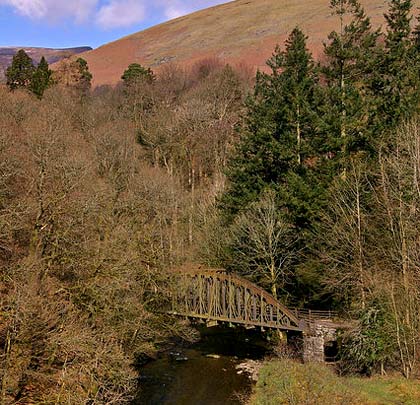
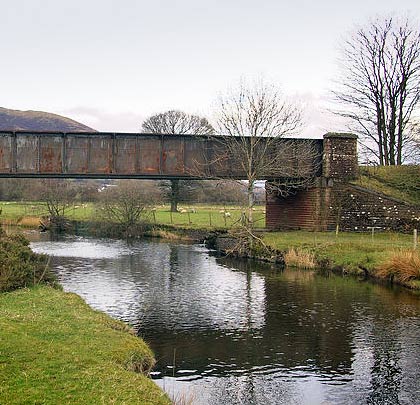











The 31½-mile Cockermouth Keswick & Penrith Railway was built between 1862-64, connecting the industrial centres of Workington in the west with Durham in the east via the lofty Stainmore line. It was built primarily with mineral traffic in mind; the first train ventured over its alignment on 26th October 1864.
The 18 miles of route between Penrith and Keswick included 78 bridges, of which eight cross the River Greta in a three-mile section between Threlkeld and Keswick. These bowstring structures were engineered by Thomas Bouch of Belah Viaduct (and Tay bridge) fame, four of them have their main girders beneath the deck, with a conventional plate girder between them. Some had additional bracing and cross beams added at a later date to handle heavier loads.
The railway here was single line, falling towards the west on gradients of between 1:76 and 1:117. At Wescoe an outcrop of rock is holed by a 24-yard tunnel (bridge 72) whilst, just west of Bobbin Mill siding, a longer bore of 92 yards took the line beneath the A66. This is now buried although the upper part of the east portal remains visible.
Closure of the route came in two stages – the Cockermouth-Keswick section lamenting its last train in April 1966, whilst the line eastwards to Penrith survived until 6th March 1972, although part of this was retained as a siding to serve the Flusco quarry for another three months.
Though much of the alignment between Keswick and Workington has been lost to the A66, the section through the Greta Gorge remains largely untouched. This allowed the Lake District National Park to create a four-mile footpath along it after acquiring this part of the former trackbed.
(Ian Capper’s photos are used under this Creative Commons licence.)
 December 2011
December 2011




